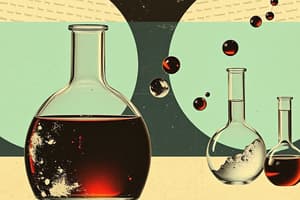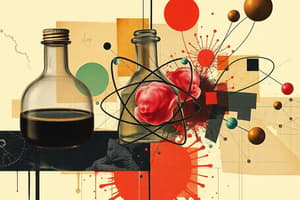Podcast
Questions and Answers
Explain the structure of an atom and its significance in relation to the properties of an element.
Explain the structure of an atom and its significance in relation to the properties of an element.
The structure of an atom consists of a nucleus containing protons and neutrons, with electrons orbiting around the nucleus. This structure determines the chemical and physical properties of the element.
Define isotopes and provide an example.
Define isotopes and provide an example.
Isotopes are atoms of the same element with different numbers of neutrons. An example is carbon-12 and carbon-14, both isotopes of carbon.
What are subatomic particles and what are their roles within an atom?
What are subatomic particles and what are their roles within an atom?
Subatomic particles are particles that are smaller than an atom. Protons and neutrons are located in the nucleus and contribute to the mass of the atom, while electrons orbit the nucleus and are involved in chemical reactions.
Explain the concept of diatomic and provide examples.
Explain the concept of diatomic and provide examples.
What is the significance of calculating the atomic number and mass number of various elements?
What is the significance of calculating the atomic number and mass number of various elements?
Flashcards are hidden until you start studying




